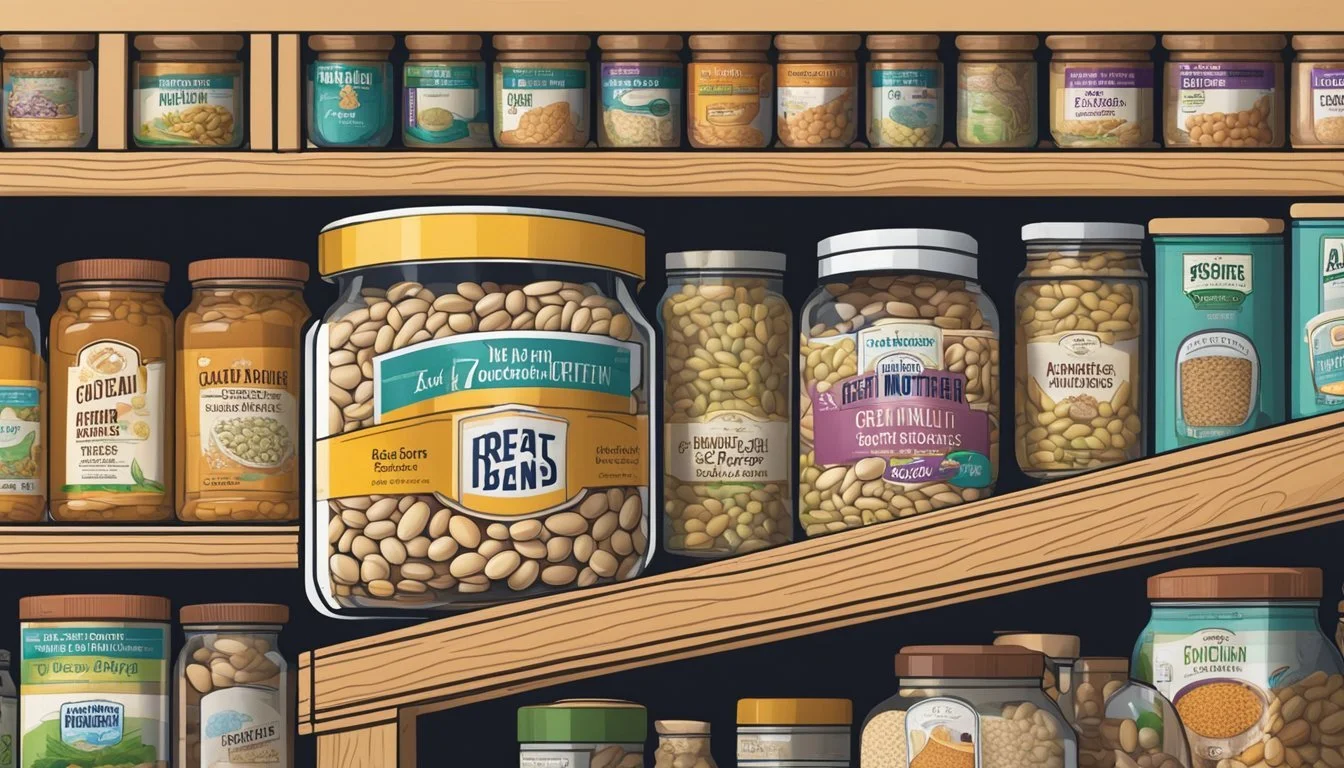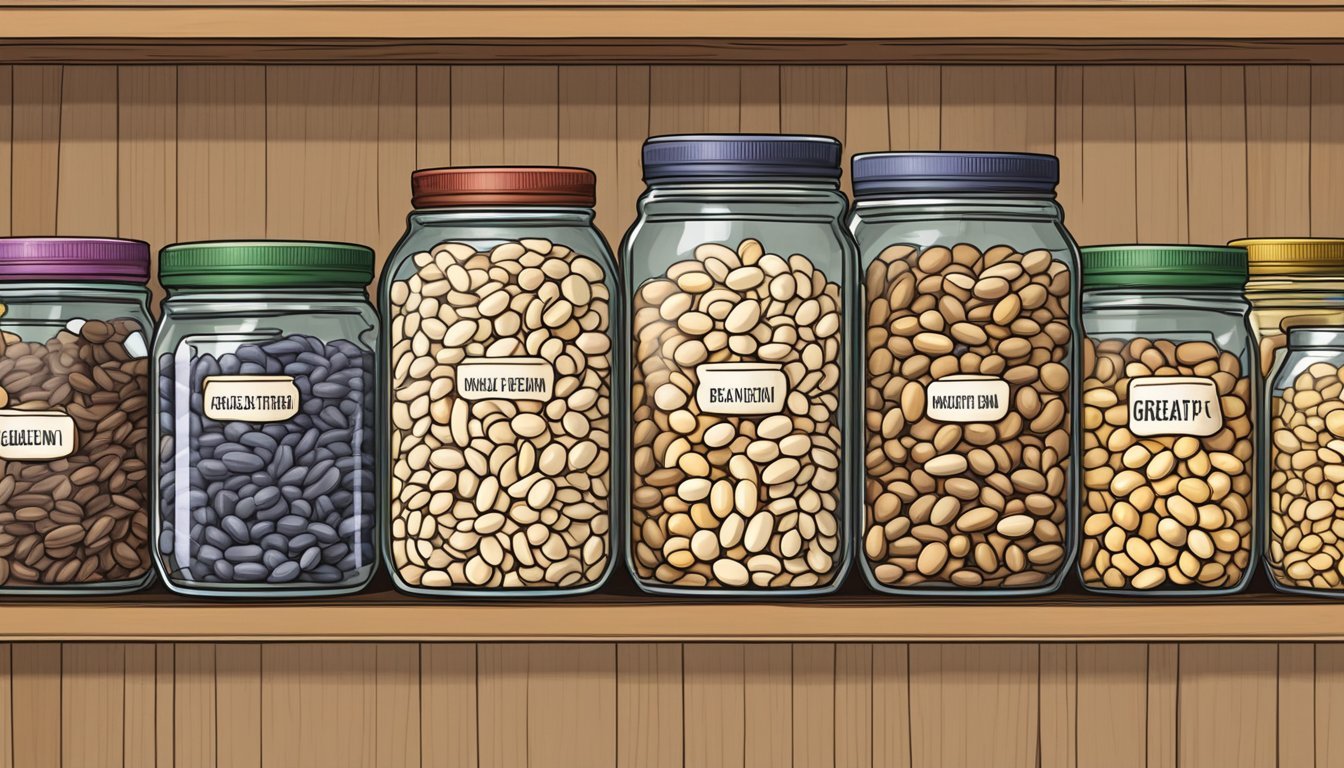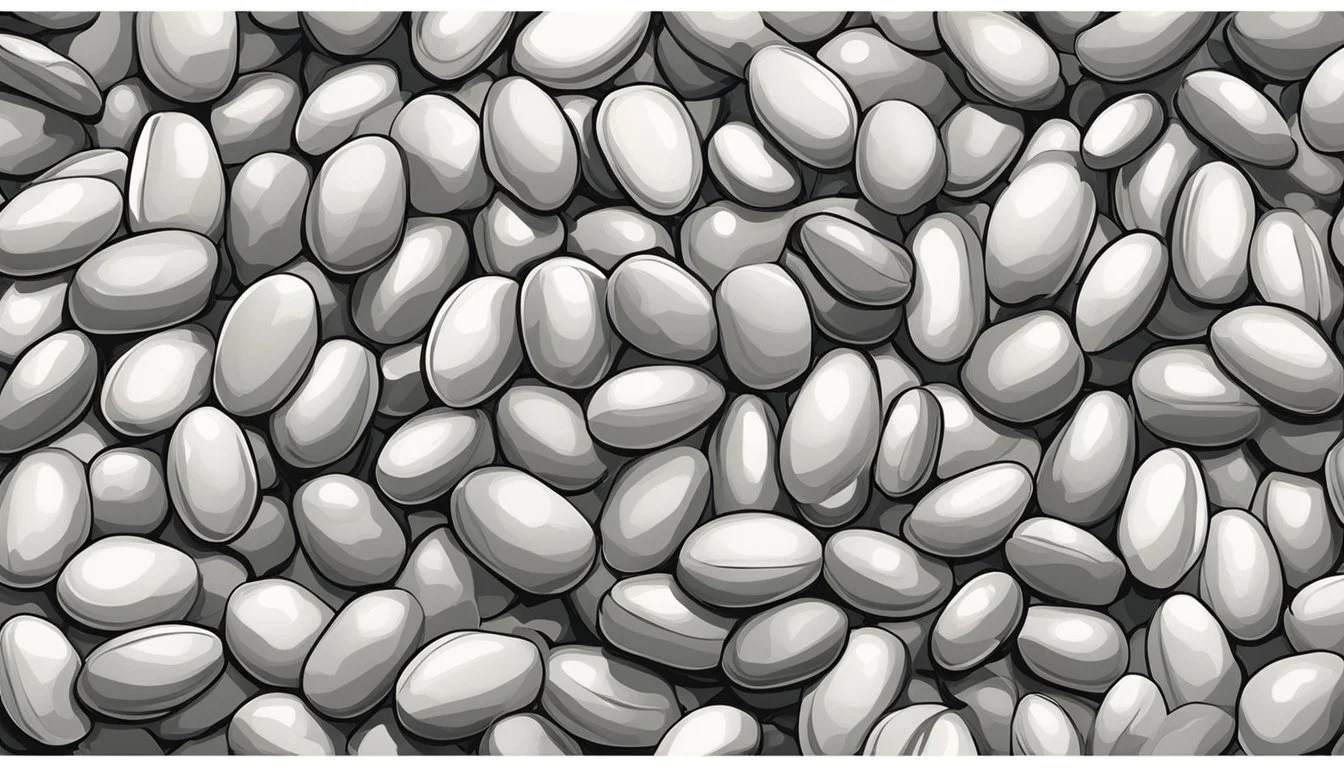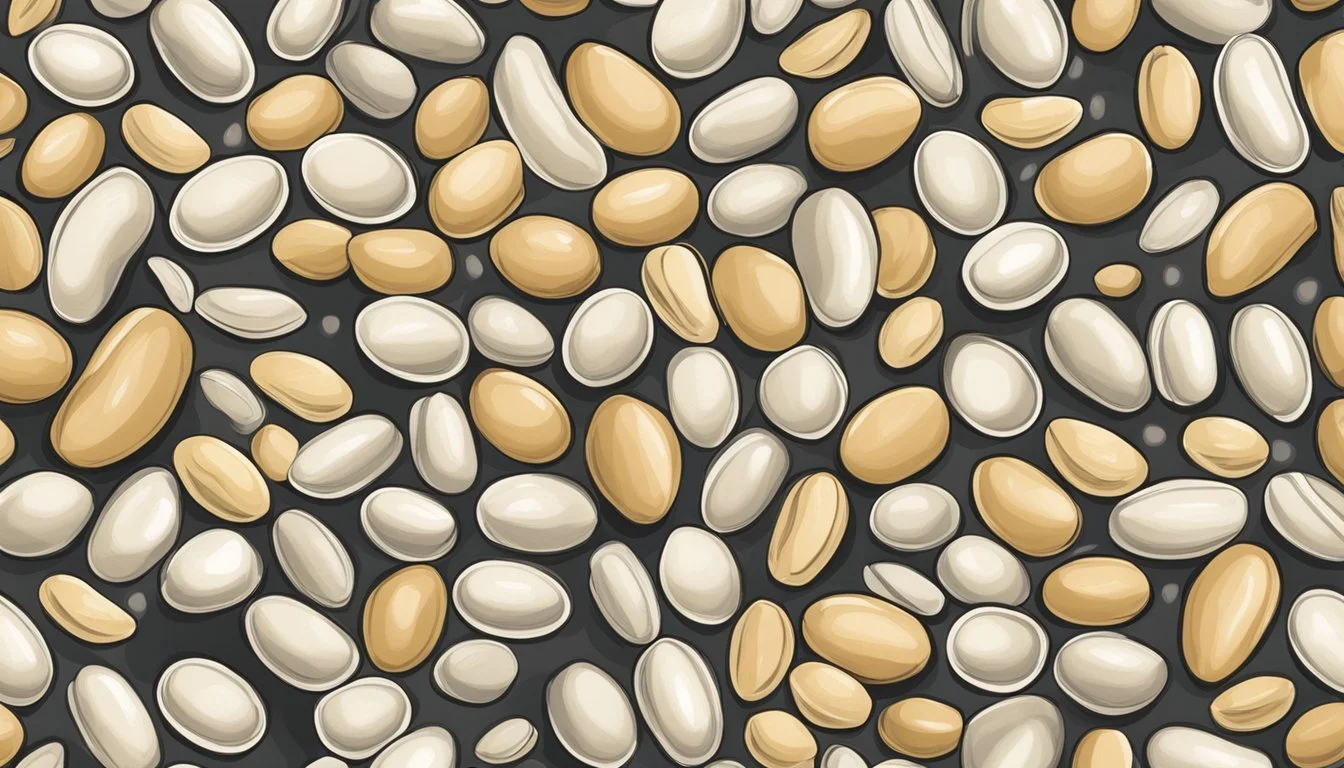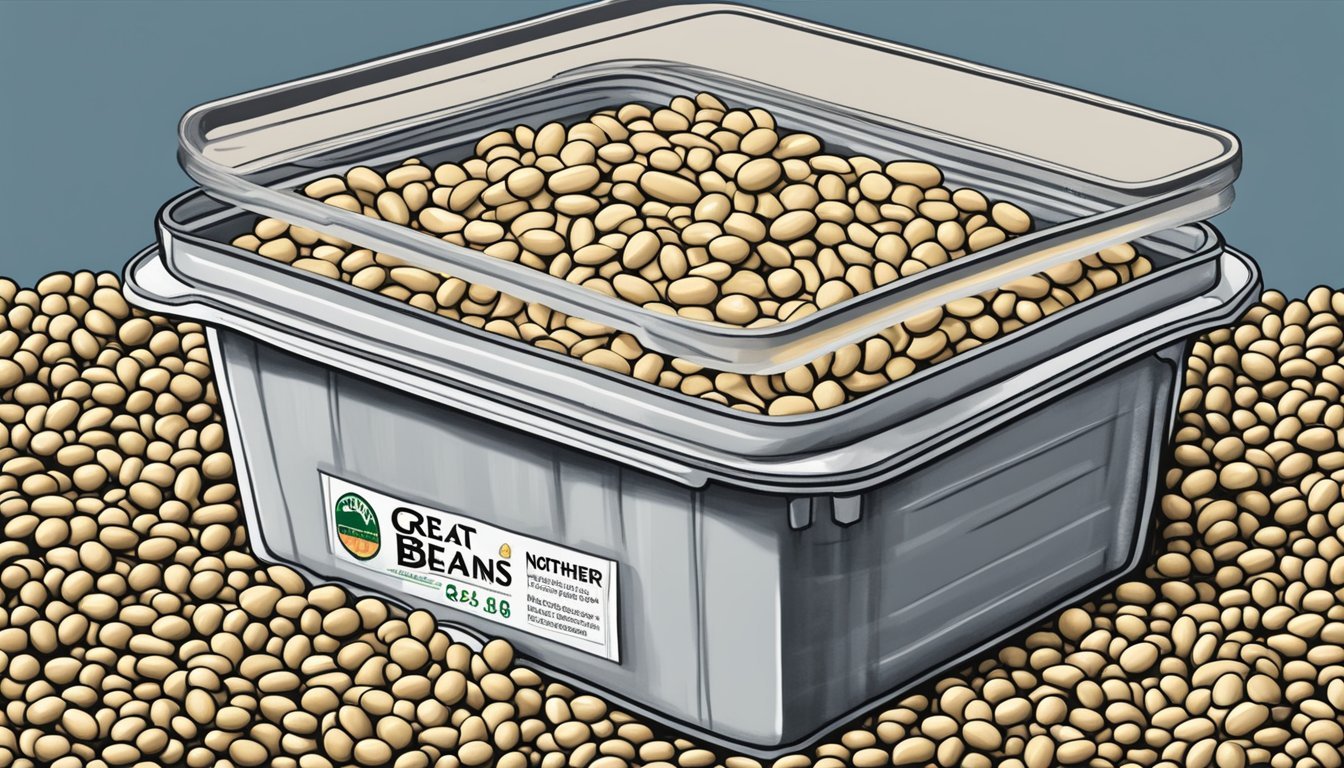How Long Do Great Northern Beans Last?
Shelf Life and Storage Tips
Great Northern beans (how long do great northern beans last?), a popular variety of white beans, are known for their mild flavor and firm flesh, which makes them suitable for a wide range of dishes, from soups to salads. When it comes to shelf life, Great Northern beans can last for an impressively long time, making them a pantry staple with excellent longevity.
Dried Great Northern beans, if stored properly, typically retain their best quality for about 2 to 3 years at normal room temperature. After this period, while they may not be at their peak quality, they usually remain safe to eat. Storing the beans in a cool, dry place away from direct light in an airtight container can help to ensure they stay at their best for as long as possible.
Cooked Great Northern beans offer a shorter shelf life due to their moisture content, which can encourage microbial growth. In the refrigerator, they can be safely eaten for up to a week, while freezing can extend their edible period up to 6 months. Observing the beans for any changes in smell, taste, or texture can help determine if they have gone bad, with the presence of a sour odor or a slimy texture signaling that it is time to dispose of them.
Overview of Great Northern Beans
Great Northern beans are a type of white bean that is prized for its protein content and nutritional value. This section will discuss their characteristics, including their flavor profile and health benefits.
Characteristics of Great Northern Beans
Great Northern beans are medium-sized white beans known for their delicate, creamy texture and mild, nutty flavor. They are a versatile legume, often used in a variety of dishes such as soups, stews (What wine goes well with stews?), and casseroles.
Protein: A solid choice for plant-based protein.
Fiber: Rich in dietary fiber, contributing to digestive health.
Vitamins: Great Northern beans contain essential vitamins, such as B vitamins.
Minerals: They offer minerals like iron and magnesium.
Calories: They are low in calories, making them a healthy addition to any diet.
Carbohydrate: Being a bean, they are a good source of carbohydrates, which provide energy.
The nutrient profile of Great Northern beans includes substantial fiber and protein levels, making them an excellent food choice for those looking to maintain a healthy diet. Furthermore, they contain important vitamins and minerals and are lower in calories, which can be beneficial for weight management. Their subtle flavor makes them a favorite for absorbing the tastes of other ingredients in culinary preparations.
Optimal Storage Conditions
Preserving the quality and extending the shelf life of great northern beans relies heavily on maintaining the proper storage conditions. Factors such as temperature, air exposure, and humidity play critical roles in ensuring that the beans are stored effectively.
Shelf Life in Different Conditions
The shelf life of great northern beans can vary significantly based on how and where they are stored. Below is a breakdown of shelf life under different storage conditions:
Pantry: In a cool, dry place such as a pantry or cupboard, dried great northern beans typically last for 2 to 3 years while retaining their best quality. An airtight container can help protect them from moisture and pests.
Refrigerator: Once cooked, great northern beans should be placed in an airtight container in the fridge, where they can last for up to 5 days, with a quality peak within the first 3 days.
Temperature and Humidity Factors
Keeping great northern beans in top condition necessitates control over environmental factors:
Temperature: A consistently cool environment, ideally between 50-70°F (10-21°C), is ideal for storage. Locations such as a basement can sometimes provide this cool temperature, but spaces like garages or attics are prone to temperature fluctuations and are not suitable.
Humidity: Low humidity is key to preventing mold and spoilage. Moisture levels should be kept minimal, which makes airtight containers an excellent choice for prolonging shelf life and maintaining the integrity of the beans.
It is also advisable to keep the beans in a dark place as direct sunlight can cause temperature increases and lead to faster degradation of quality.
Preparation and Cooking Methods
Before diving into the specifics of cooking Great Northern Beans, it's essential to recognize the importance of proper preparation techniques, precise cooking times, and the use of flavors to enhance the overall taste.
Proper Soaking Techniques
Prior to cooking, Great Northern beans should be thoroughly rinsed and sorted to remove any debris. Soaking the beans is crucial; it helps to soften the beans and shorten the cooking time. There are two main methods: the overnight soak and the quick soak. For an overnight soak, beans should be covered with several inches of cold water and left to stand for at least 8 hours or overnight. For a quick soak, beans should be brought to a boil for 2 minutes, then removed from heat and allowed to stand for 1 hour.
Cooking Time and Texture
After soaking, Great Northern beans will typically require 60 to 90 minutes of simmering on the stove to become tender. Alternatively, a slow cooker can tenderize these beans over several hours, while maintaining integrity in texture. When testing for doneness, beans should be soft enough to crush with a fork, but not mushy, ensuring a delightful eating experience.
Seasoning and Flavor Enhancement
Appropriate seasoning is vital for flavorful Great Northern beans. Salt should be added towards the end of cooking to avoid toughening the skins. Aromatics like garlic, pepper, bay leaves, or diced onions can be incorporated early on to imbue the beans with rich tastes. For a depth of flavor, meats such as smoked turkey leg or ham hock can be included in the starting phase of the cooking process.
Identifying Spoilage
When assessing whether great northern beans have spoiled, one should primarily watch for specific changes in smell, appearance, and texture.
Signs of Suboptimal Beans
Smell: Beans that emit a foul or off odor may be spoiled.
Mold: Visible mold growth on the beans is a sign of spoilage.
Color: Any significant changes in color could indicate that the beans are no longer fresh.
Texture: If the beans feel slimy or mushy, they should not be consumed.
Health Risks of Spoiled Beans
Spoiled great northern beans can harbor bacteria which may lead to food poisoning. Consuming beans with signs of spoilage should be avoided to prevent potential health risks.
Canned Great Northern Beans
Canned great northern beans offer a shelf-stable option for long-term storage while maintaining much of their nutritional value. Proper storage and attention to can integrity are essential to maximize their shelf life and ensure safety.
Shelf Life and Quality
Canned great northern beans typically remain at their best quality for about 2 to 5 years when unopened. Once opened, these beans should be transferred to a refrigerator and consumed within 3 to 4 days for optimal taste and safety. The expiration date on the label can serve as a guide, but consumers can often safely use canned beans beyond this date if stored properly and the cans remain intact.
Best Quality Timeframe:
Unopened: 2 to 5 years
Opened (Refrigerated): 3 to 4 days
Can Integrity and Storage
The condition of the can is a critical factor in the safety and preservation of canned great northern beans. Consumers should inspect cans for any signs of damage such as rust, bulging, or dents, which can compromise the can's seal and the product's safety. Ideally, canned beans should be stored in a cool, dry place to prevent degradation and maintain their shelf-stable nature.
Inspection Checklist:
Rust: Avoid cans with any rust.
Bulging: Do not consume if cans are bulging.
Dents: Be cautious of deeply dented cans, especially along seams.
Labeling Tip: After opening, transfer leftovers to an airtight container, label with the current date, and store in the refrigerator.
Freezing and Long-Term Preservation
To ensure the longevity of Great Northern beans, proper freezing methods are crucial. Freezing not only extends their shelf life but also preserves their quality.
Effective Freezing Techniques
Before freezing Great Northern beans, one should ensure they are dry and cooled if they have been cooked. Placing beans in freezer bags or freezer-safe containers is recommended to fend off freezer burn. These storage methods also help maintain the beans' texture and flavor. To reduce moisture buildup, one should expel as much air as possible from the freezer bags before sealing. Labeling containers with the date of freezing helps track how long the beans have been stored.
Steps to Freeze Great Northern Beans:
Allow cooked beans (how long do cooked beans last?) to cool completely.
Transfer to a freezer bag or freezer-safe container.
Expel excess air from bags to minimize moisture.
Label with the freezing date.
Place in the freezer, avoiding contact with other items that may cause odor transfer.
Defrosting for Best Results
When it comes to defrosting frozen Great Northern beans, transferring them from the freezer to the refrigerator is the safest method. This gradual thaw minimizes the risk of bacteria growth. For quicker defrosting, one can use a microwave with a defrost setting, but it's imperative to ensure even heat distribution to avoid partially cooked beans. If one plans to cook the beans immediately after defrosting, they may be reheated directly in a saucepan or in an oven until thoroughly warmed.
Methods of Defrosting:
Refrigerate the beans overnight.
Use the microwave's defrost function, stirring regularly.
Reheat directly in a saucepan over low heat if cooking right away.
By adhering to these freezing and defrosting techniques, Great Northern beans can be effectively preserved and enjoyed well beyond their usual shelf life, without compromising their flavor or texture.
Incorporating Great Northern Beans in Dishes
Great Northern beans offer a delicate, nutty flavor and creamy texture, making them an excellent addition to various dishes. They are particularly favored in slow-cooked meals (how long do cooked meals last?) like soups, stews, and chili for their ability to absorb flavors while maintaining their shape.
Bean Selection for Soups and Stews
When preparing soups or stews, selecting high-quality dry Great Northern beans is crucial. These beans should be soaked overnight or quick-soaked in boiling water to reduce cooking time and enhance digestibility. For a soup or stew, one should consider:
Soaking time: 8 hours overnight or 1 hour of quick soak.
Cooking method: In a slow cooker or on the stove.
Incorporating these beans into soups and stews allows them to absorb the savory flavors of other ingredients while adding a rich, creamy texture.
Alternative Uses and Recipes
Great Northern beans are extremely versatile and can be used beyond traditional soups and stews. Here are some alternative ways to prepare them:
Chili: The beans' firm texture makes them ideal for a hearty chili that won't become mushy.
Salads: Cool, cooked Great Northern beans can enhance a salad with protein and texture.
Purees or dips: Their creamy texture once cooked creates a smooth puree for dips or spreads.
They can also be spotlighted in recipes that require a subtler bean flavor, such as:
Side dishes: Beans seasoned simply with herbs like rosemary or combined with vegetables.
Main dishes: Beans as the star in a dish with complementary ingredients such as garlic, onions, and bacon.
Selecting Great Northern beans for recipes provides a nutritious boost and opens up a world of culinary possibilities due to their adaptable nature.
Nutritional and Health Benefits
Great Northern beans are recognized for their substantial nutritional value, offering a wealth of vitamins, minerals, and other nutrients essential for maintaining a healthy diet.
Macro and Micro Nutrient Contents
Macronutrients:
Protein: A serving of Great Northern beans provides about 15 grams of protein, which is vital for muscle repair and growth.
Fiber: High in dietary fiber, these beans contribute to digestive health and may help in regulating blood sugar levels.
Carbohydrates: With around 37.3 grams per cup, the complex carbohydrates in Great Northern beans are a steady source of energy.
Micronutrients:
Vitamins: They contain vitamin B6 and folate, important for metabolic functions and the production of red blood cells.
Minerals: Minerals such as calcium and iron are present in considerable amounts, supporting bone health and oxygen transport in the bloodstream.
Other Considerations:
Low in fat and with negligible sodium when cooked without added salt, Great Northern beans can be a heart-healthy food choice.
As part of the legume family, these beans are not only nutritious but also a sustainable protein source, with potential benefits for food safety through reduced reliance on meat.
\Table Summary: Great Northern Beans Nutrient Profile/
Nutrient Amount per 1 Cup (Cooked) % Daily Value (DV) Protein 15 grams Fiber Variable Carbohydrates 37.3 grams Vitamin B6 0.1 mg Folate 102 mcg Calcium 9% DV Iron 21% DV
Great Northern beans offer a robust nutrient profile, making them an excellent addition to a variety of diets.
Preventing Contamination and Pests
Proper storage techniques are crucial to maintain the quality and safety of Great Northern beans by preventing contamination and pests. Careful handling of these legumes can also ensure that their shelf life is maximized.
Secure Storage Against Insects and Rodents
To effectively protect Great Northern beans from insects and rodents, one must store them in airtight containers or mylar bags that are impenetrable to these pests. This method not only prevents infestation by various bugs but also preserves the legumes from environmental factors that can compromise their quality.
Airtight Containers: Containers with tight-fitting lids are essential in warding off insects and protecting beans from humidity and varying storage temperatures. These should be checked periodically for any signs of scratching or damage which could indicate a breach.
Mylar Bags: These bags offer an additional layer of protection and can be sealed to ensure no air leaks. Mylar bags are particularly resistant to bursting and can prevent absorption of any odors from their surroundings.
When placing beans in storage, it is crucial to first inspect the area for any pre-existing pests and to maintain a clean environment to reduce attractants. Beans should be stored in a cool, dry place to further discourage pest infestation and to keep the beans in optimal condition for extended periods.

